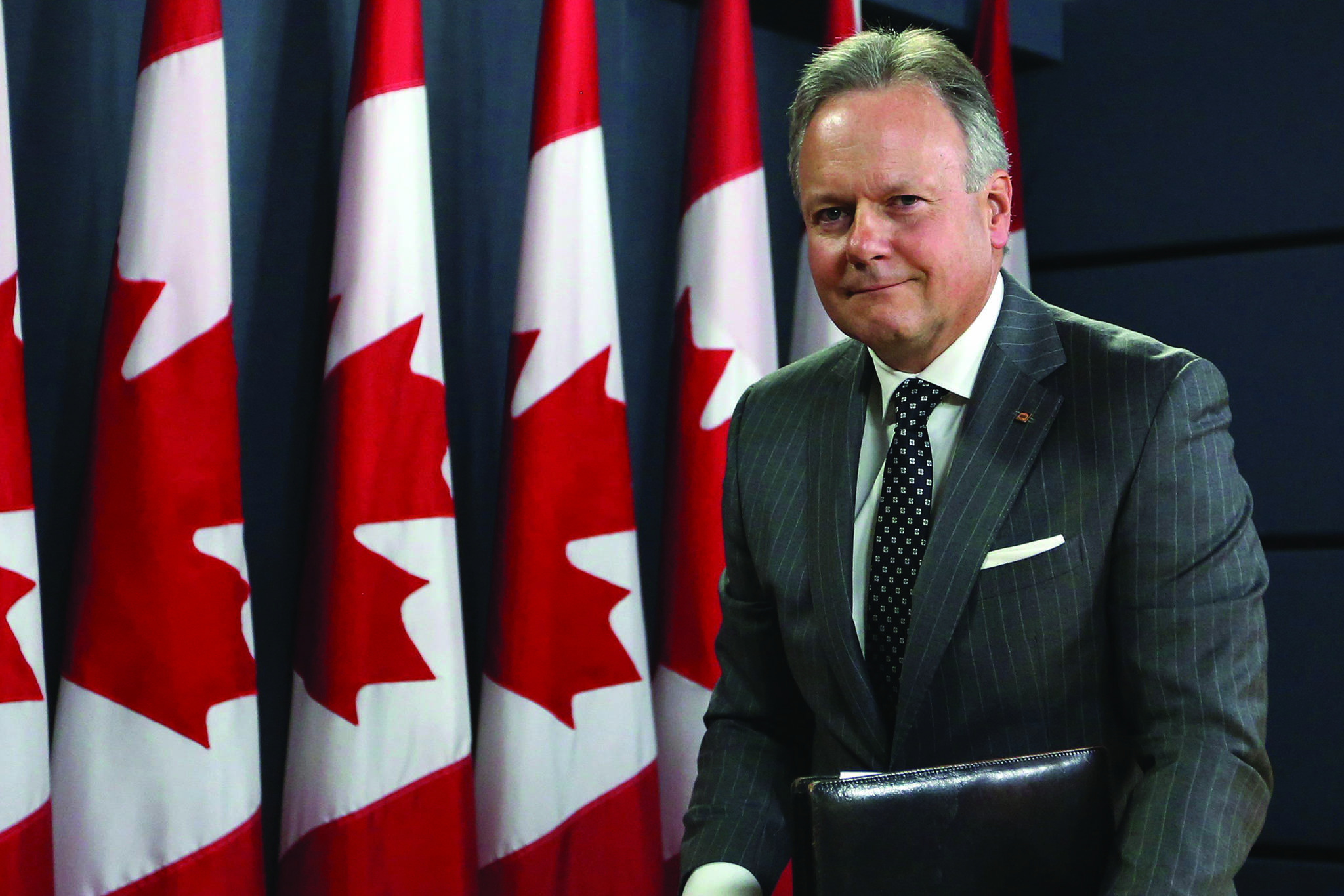The Bank of Canada left its key interest rate unchanged Wednesday and pointed to ”increased uncertainty” about the timing of future rate hikes following the economy’s abrupt deceleration in late 2018.
The central bank’s trend-setting interest rate is staying at 1.75 per cent for a third-straight policy announcement — a stretch that comes after governor Stephen Poloz introduced five rate hikes between mid-2017 and last fall.
Notably, the bank’s statement Wednesday dropped language from its release in January that said the governing council expected the rate would need to rise over time to an estimated destination range of between 2.5 and 3.5 per cent.
“Given the mixed picture that the data present, it will take time to gauge the persistence of below-potential growth and the implications for the inflation outlook,” said the statement, which explained some of the factors behind the decision.
“With increased uncertainty about the timing of future rate increases, governing council will be watching closely developments in household spending, oil markets, and global trade policy.”
Last week, Statistics Canada released a report that showed the country, over the final three months of 2018, delivered its weakest quarter of economic growth in two and a half years. Economic growth slowed to an annualized pace of just 0.4 per cent.
In its statement Wednesday, the central bank said it had been expecting a drop in household spending as well as weak numbers for exports and investment in oil-producing provinces in the fourth quarter.
But it acknowledged the slowdown ended up being “sharper and more broadly based” than it had anticipated.
READ MORE: Bank of Canada holds interest rate, views oil slump as temporary soft patch
READ MORE: Bank of Canada says Canadians owe $2 trillion as it mulls next rate hike
The central bank had been warning Canadians to expect a soft patch in late 2018 and early 2019 primarily due to the steep drop in oil prices late last year.
Poloz noted in January that “as the snow melts, we’ll have a clearer view that the economy is back on track and then likely to grow above or around two per cent after that.”
A fresh economic start by spring no longer appears to be in the forecast.
The first half of 2019, the bank added, is now on track to produce weaker numbers than its projection two months ago.
“Consumer spending and the housing market were soft, despite strong growth in employment and labour income,” the statement said.
“Both exports and business investment also fell short of expectations.”
Statistics Canada said the late-2018 slowdown was mostly due to a 2.7 per cent contraction, on a quarter-over-quarter basis, in investment spending. Overall exports saw a slight decline and household spending slowed for a second straight quarter.
Heading into the decision Wednesday, the Bank of Canada was widely expected to leave the key interest rate untouched.
Many analysts have predicted the bank will wait until at least late 2019 before introducing another rate hike. There have also been doubts whether Poloz will raise the rate again this year — or whether his next move will even be a hike.
The central bank’s next policy decision is scheduled for April 24 when it will also update its economic outlook in its monetary policy report.
On Wednesday, the bank said the global economy’s deceleration has been more pronounced than expected — and more widespread.
The moderation, it added, has been caused in large part by concerns related to trade tensions and uncertainty. The bank, however, noted that global economic prospects would improve if ongoing trade conflicts are resolved.
The bank predicted inflation to stay slightly below its ideal two per cent target through most of the year.
Andy Blatchford, The Canadian Press



